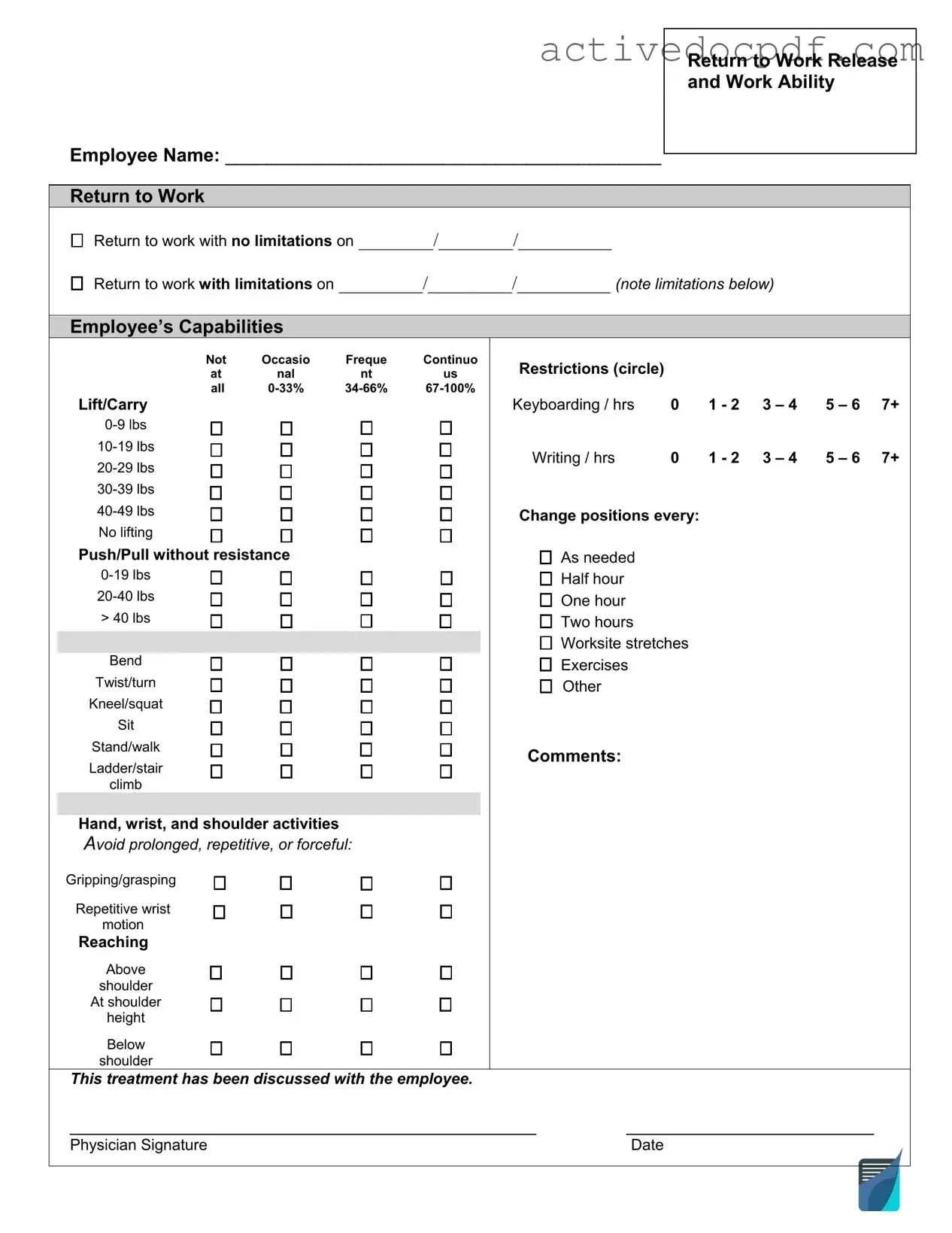A Work Release form is a document that allows individuals, often those who are incarcerated, to leave their correctional facility temporarily for work purposes. This form outlines the conditions under which the individual can work outside the facility and ensures that they return after their work hours.
Typically, individuals who are currently serving a sentence in a correctional facility and wish to work while incarcerated need to fill out a Work Release form. This includes those in jails, prisons, or other detention centers. Additionally, employers may need to be involved in the process to confirm job details.
The Work Release form generally requires the following information:
-
Full name of the individual
-
Inmate identification number
-
Details of the job, including employer's name and address
-
Work schedule and hours
-
Signature of the individual and possibly the employer
Additional information may be required depending on the facility's regulations.
After completing the Work Release form, submit it to the appropriate authority within the correctional facility. This may include a case manager or the facility's administration. Ensure that you follow any specific submission guidelines provided by the facility.
Once submitted, the facility will review the form. They will consider factors such as the nature of the job, the individual’s behavior, and any legal restrictions. If approved, the individual will receive instructions on the next steps, including how to report to work and any conditions that must be followed.
Can my Work Release request be denied?
Yes, a Work Release request can be denied. Common reasons for denial include:
-
Previous violations of facility rules
-
Ineligibility due to the nature of the crime
-
Lack of a suitable job offer
If denied, individuals may have the option to appeal the decision or reapply at a later date.
What are the consequences of not following the Work Release conditions?
Failing to adhere to the conditions set forth in the Work Release form can lead to serious consequences. These may include:
-
Revocation of work release privileges
-
Additional disciplinary actions within the facility
-
Potential legal repercussions
It is crucial to understand and follow all rules to maintain eligibility for work release.
